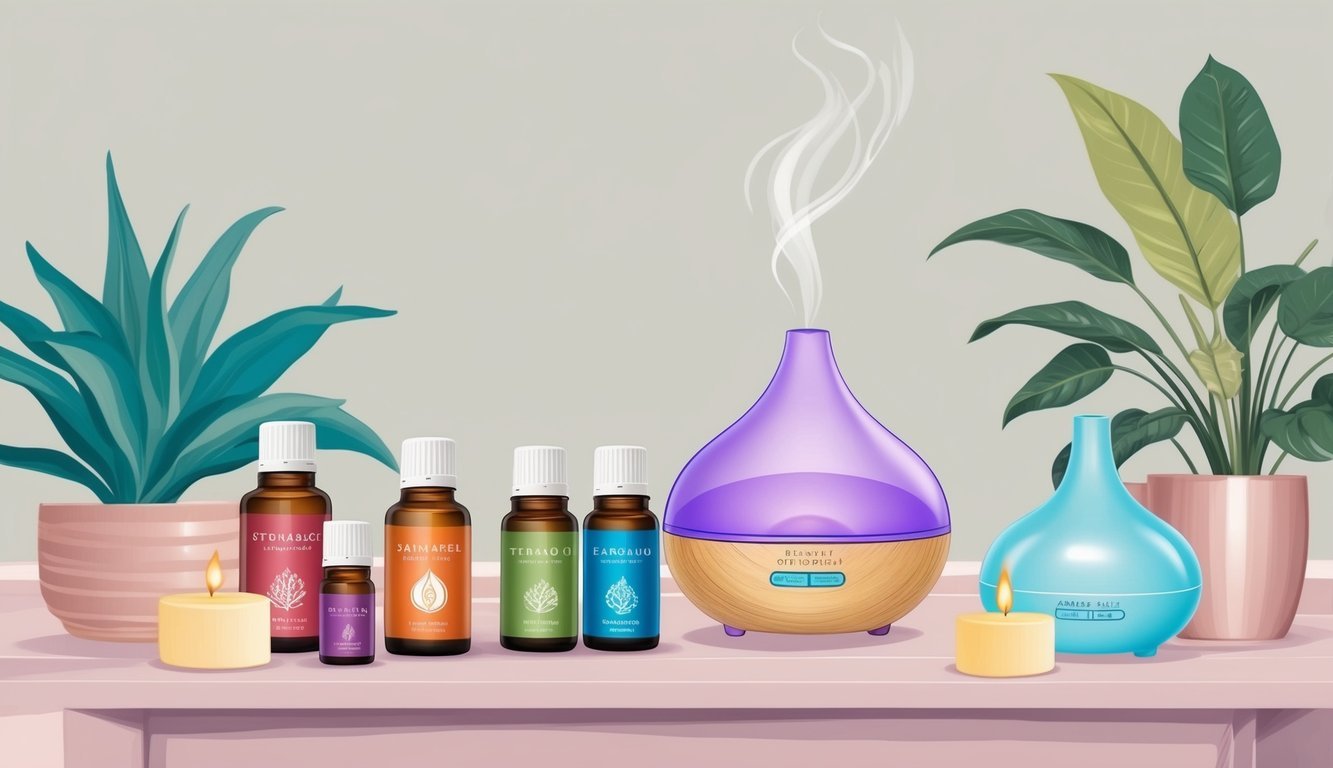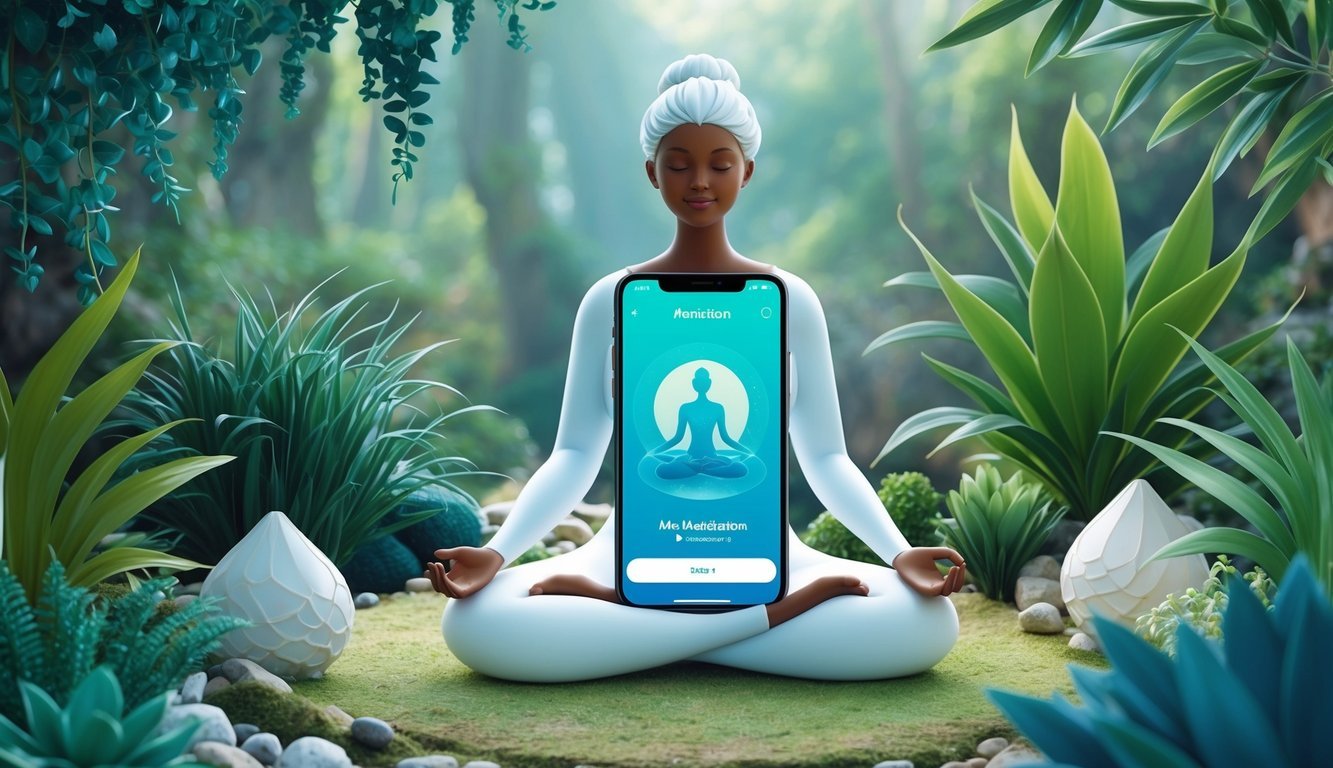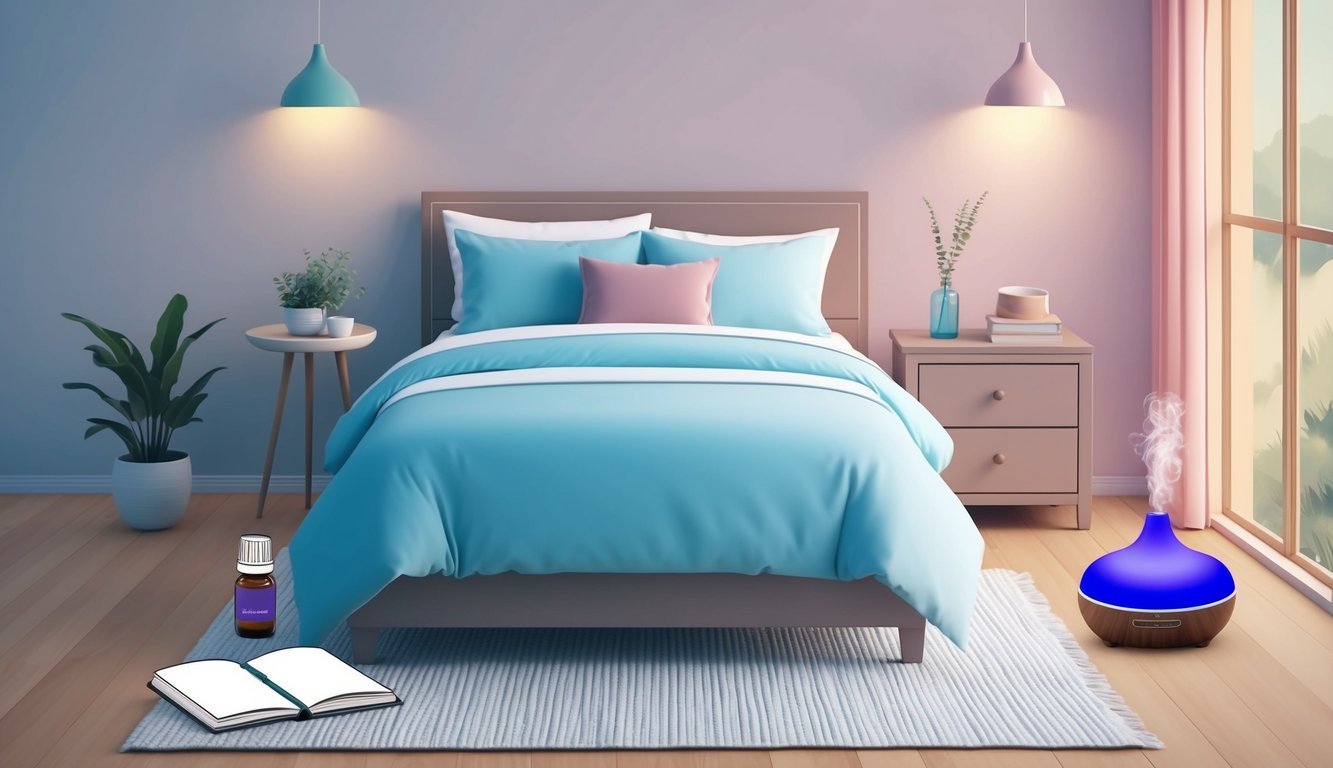I know how overwhelming stress and anxiety can feel, often creeping into our daily lives without warning.
Finding effective ways to manage these feelings is essential for maintaining well-being.
You can use simple solutions to help calm the mind and promote a sense of peace.

I’ve found that incorporating a few practical techniques can make a noticeable difference.
Whether it’s adjusting daily habits or exploring relaxation strategies, these approaches can be easily woven into a busy lifestyle.
1) Mindful Breathing Techniques
When I feel anxious, I often turn to mindful breathing.
It’s super simple but can be surprisingly effective.
The goal is to focus on my breath and let distractions fade away.
To start, I find a comfortable spot and sit up straight.
I take a deep breath in through my nose for a count of four.
Holding my breath for four counts helps me feel centered.
After that, I exhale slowly through my mouth for a count of six.
This longer exhale lets tension escape.
I repeat this cycle several times, and it really helps to calm my mind.
Another technique I like is to place my tongue on the ridge behind my upper front teeth while breathing.
This small focus point keeps my mind engaged and away from racing thoughts.
Whenever I practice mindful breathing, I notice I feel more grounded and less stressed.
It’s a straightforward tool I can use anytime and anywhere.
Herbal Tea Rituals
I find that incorporating herbal tea into my daily routine can bring a sense of calm.
The act of brewing tea itself is soothing, almost like a mini-meditation.
There are so many options when it comes to herbal teas.
Chamomile is a classic choice for relaxation.
I love its gentle, floral notes that help ease my mind at the end of the day.
Tulsi, or holy basil, is another favorite of mine.
It’s known to help reduce stress and improve mood.
I enjoy sipping it in the afternoon, especially when I need a little lift.
I also experiment with blends.
Mixing chamomile, lemon balm, and lavender creates a delightful brew that feels like a warm hug.
Preparing this blend becomes a comforting ritual.
Passionflower tea is another good option for me.
It’s said to promote sleep and relaxation, making it perfect for evenings.
Whenever I need a break, I take a moment to enjoy my tea.
It’s a simple pleasure that helps ground me amidst a busy day.
These herbal tea rituals have become a cherished part of my routine.
3) Daily Gratitude Journals
I’ve found that keeping a daily gratitude journal can really help ease stress and anxiety.
Each day, I jot down a few things I’m thankful for.
This simple practice shifts my focus from worries to positives in my life.
When I reflect on what brings me joy, it lightens my mood.
I’ll write about small things, like a good cup of coffee or a chat with a friend.
These entries don’t have to be long; just a few sentences work.
I’ve noticed that over time, this habit makes me more aware of the good around me.
It encourages a mindset of appreciation, which feels grounding during tough times.
Finding a journal I love made it easier to stick with this.
I look forward to writing in it, which makes the process enjoyable.
By creating this daily ritual, I’ve taken a proactive step in managing my mental well-being.
DIY Aromatherapy with Essential Oils

I love using essential oils for stress relief.
They can create a calming atmosphere and help ease anxiety in just a few minutes.
One of my go-to blends includes ylang-ylang, bergamot, and lavender.
I simply add a couple of drops of each into my diffuser and let the aroma fill the room.
For a topical solution, I make a lavender neck rub.
I mix three drops of lavender oil with a teaspoon of coconut oil.
It feels great to apply it directly to my neck for a quick sense of relief.
Sometimes, I add a few drops of essential oil to homemade playdough for a calming sensory experience.
It’s not just fun; it’s also relaxing.
When I need on-the-go relief, I blend bergamot and German chamomile with a carrier oil like almond oil.
I keep it in a dark glass bottle and apply it to my wrists or the back of my neck.
These simple methods help me unwind and find a little peace amid the daily hustle.
5) Guided Meditation Apps

I’ve found that guided meditation apps are a great way to reduce stress and anxiety.
They offer structure and direction, which can be helpful, especially if I’re new to meditation.
One app I enjoy is Calm.
It has a wide range of meditation programs that cater to various needs, from improving sleep to tackling anxiety.
The annual subscription offers access to a lot of content.
Another app I like is Smiling Mind.
It’s perfect for younger users and has a lot of engaging materials.
It’s free, which is a big plus.
If I’m looking for something comprehensive, The Calmer You App is designed specifically for managing anxiety.
It provides tools I can use in my daily life.
For free options, The Tapping Solution offers guided meditations aimed at stress relief and sleep improvement.
It’s nice to have this accessible without any cost involved.
These apps make it easy for me to incorporate meditation into my routine, helping me feel more centered as I navigate through daily stressors.
6) Progressive Muscle Relaxation

I’ve found that progressive muscle relaxation (PMR) is a really effective method for easing stress and anxiety.
The technique is simple: it involves tensing and then relaxing different muscle groups in my body.
When I practice PMR, I usually start from my toes and work my way up to my head.
I tense each muscle group for a few seconds before letting go.
This helps me to feel the difference between tension and relaxation.
I like to pair PMR with deep breathing.
Inhaling deeply while tensing my muscles makes the release even more satisfying.
It can also improve my focus and promote a sense of calm.
PMR isn’t just for anxiety; it can also help improve sleep quality.
Incorporating it into my nightly routine has made winding down easier.
Plus, I appreciate that I can do this anywhere.
Whether I’m at home or even in a quiet moment at work, I can take a few minutes to practice PMR and feel more centered.
7) Forest Bathing Experiences

I’ve recently discovered the joy of forest bathing, and it’s been a game changer for my stress levels.
It’s all about immersing myself in nature and soaking up the peaceful atmosphere around me.
When I step into the forest, I make a point to use all my senses.
I listen to the rustling leaves, smell the earthy scents, and feel the cool breeze on my skin.
This connection to nature seems to quiet my mind.
Research shows that simply being present among trees can lower my cortisol levels, which are linked to stress.
I’ve noticed that my mood improves and I feel more relaxed after spending time in a natural setting.
I often take my time during these experiences, wandering off the beaten path and allowing my thoughts to drift.
It’s a perfect way to unplug from daily distractions.
Whether you’re taking a long walk or just sitting quietly, forest bathing offers a refreshing escape that my body and mind truly appreciate.
It’s simple, but the benefits are profound.
8) Digital Detox Challenges

I often find myself overwhelmed by constant notifications and screen time.
That’s why I decided to try a digital detox challenge.
The idea is to take a break from devices like smartphones and computers.
Initially, it felt tough to step away from my phone.
I had to find ways to occupy my time without scrolling through social media.
Reading, walking, and even doing puzzles helped fill the gaps.
During the detox, I noticed changes in my mood and anxiety levels.
Without the constant barrage of information, my mind felt clearer.
I was more present in conversations and enjoyed my surroundings.
Setting specific time limits for device usage can also make a difference.
For instance, I now limit screen time to under an hour a day.
This has helped me gain a healthier balance between online and offline life.
I encourage anyone feeling stressed to consider a digital detox.
It can be a refreshing way to reconnect with yourself and the world around you.
9) Sleep Hygiene Overhauls

I’ve found that improving sleep quality has a direct impact on my stress and anxiety levels.
Creating a solid sleep environment is key.
I make sure my bedroom is cool, dark, and quiet, which helps me relax.
Establishing a regular sleep schedule has worked wonders for me, too.
I try to go to bed and wake up at the same time every day.
This consistency sets my body’s internal clock and enhances my sleep quality.
I also prioritize a calming bedtime routine.
Engaging in relaxing activities—like reading or meditating—before bed signals my brain that it’s time to wind down.
Limiting screen time is another trick I’ve learned.
I put away my devices at least an hour before bed to reduce blue light exposure, which can interfere with sleep.
Lastly, I pay attention to my daytime habits.
Getting outside in natural light helps regulate my sleep patterns.
Regular exercise, especially earlier in the day, also contributes positively to my overall sleep hygiene.
Causes of Stress and Anxiety
Many things can trigger stress and anxiety.
Some common causes include:
- Work Pressure: Tight deadlines and heavy workloads at work can lead to high stress levels.
- Financial Worries: Concerns about money can create persistent anxiety, especially during tough economic times.
- Life Changes: Major life events, like moving, getting married, or going through a divorce, can be significant stressors.
- Relationships: Conflicts or issues with family and friends can also weigh heavily on our mental well-being.
Understanding these causes helps me identify patterns in my own life.
Once I know my triggers, I can develop strategies to better manage or avoid them.
Effects on Mental Health
Stress and anxiety don’t just affect mood; they can play a big role in our overall mental health.
The impact includes:
- Mood Swings: These feelings can lead to irritability and emotional instability.
- Cognitive Issues: Difficulty concentrating or remembering things can arise, making simple tasks feel overwhelming.
- Sleep Disturbances: Stress often leads to trouble sleeping, which creates a cycle that worsens anxiety.
- Physical Symptoms: I may experience headaches, fatigue, or even digestive issues as a result of prolonged stress.
Addressing these effects is crucial.
Recognizing them can motivate me to seek methods for relief and establish a more balanced mental state.
Lifestyle Changes to Combat Stress
Making small changes in my lifestyle can significantly impact how I manage stress.
Staying active and eating well are two powerful ways to help keep stress at bay.
The Role of Physical Activity
Engaging in regular physical activity is one of the best ways to combat stress.
It doesn’t mean I have to run a marathon; even a brisk walk or some light stretching can do wonders.
Exercise boosts endorphins, which are natural mood lifters.
I try to incorporate activities I enjoy, like dancing or cycling, to make it more fun.
Here’s a quick list of benefits:
- Reduces tension: Physically releasing tension in my muscles helps calm my mind.
- Improves sleep: A good workout often leads to better sleep quality, which is essential for stress management.
- Increases resilience: Regular exercise can enhance my ability to cope with daily stressors.
Importance of a Balanced Diet
What I eat plays a crucial role in how I feel.
A balanced diet rich in fruits, vegetables, whole grains, and lean protein can help stabilize my mood and energy levels.
Certain foods, like fatty fish or nuts, have omega-3 fatty acids, known to reduce anxiety.
I try to limit caffeine and sugar, as they can contribute to stress and irritability.
I also incorporate herbal teas, such as chamomile or green tea, as natural remedies for stress that help promote relaxation.
Staying hydrated and eating a balanced diet with plenty of fruits and vegetables also support overall well-being.
Making these small dietary changes has significantly improved my ability to manage stress and stay focused throughout the day.
Here’s a snapshot of foods that can help:
- Leafy Greens: These are packed with vitamins and minerals that help combat stress.
- Fruits: Berries and bananas are great for quick energy and mood boosts.
- Whole Grains: Foods like oatmeal and brown rice help maintain stable blood sugar levels.
By focusing on my diet and staying active, I can create a powerful buffer against stress in my daily life.

